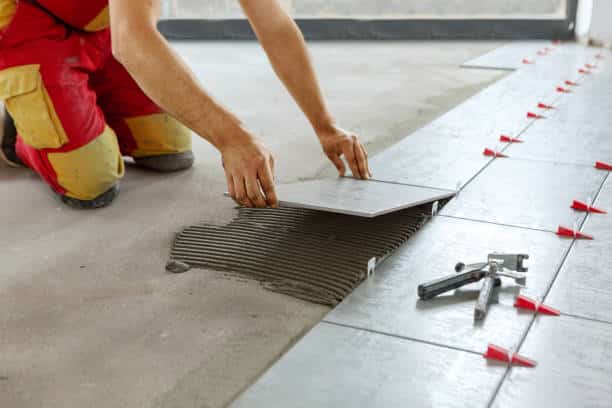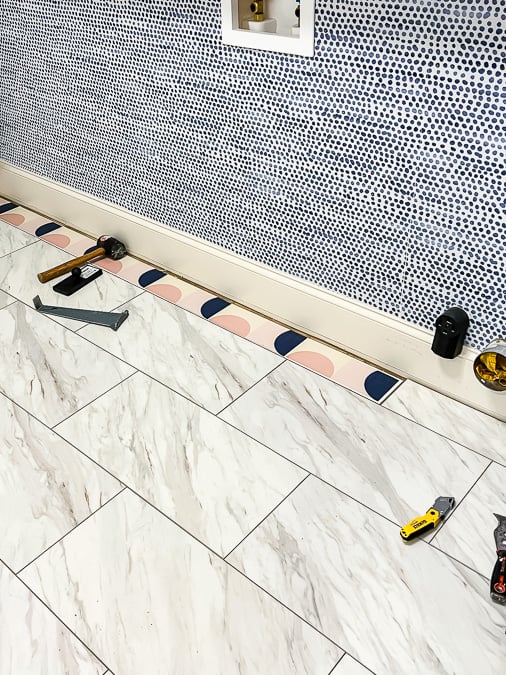From Principle to Conclusion: Superior Tile Installation Austin
From Principle to Conclusion: Superior Tile Installation Austin
Blog Article
The Ultimate Guide to Expert Floor Tile Installation Techniques
Beginning on a trip to master the art of expert ceramic tile setup calls for more than just a consistent hand and an eager eye for information. In the realm of tile installment, the evil one lies in the details, and this overview aims to untangle the details that set specialists apart from novices.
Surface Area Preparation Strategies
Prior to starting any type of tile setup project, complete surface area prep work methods have to be meticulously implemented to ensure a sturdy and remarkable outcome. The first step involves examining the substratum to assure it is structurally audio and free of any debris, grease, or dirt that might impede proper adhesion. It is vital to repair any type of fractures or imperfections in the surface area to stop future tile damages. Next off, the surface area should be leveled using appropriate compounds to produce a smooth and even structure for the tiles. Appropriate waterproofing is vital, particularly in damp areas such as bathrooms or kitchen areas, to avoid moisture seepage and possible mold and mildew growth. Furthermore, using a guide specifically created for the sort of substratum being utilized can enhance bonding capabilities. Verifying all surface area prep work actions before continuing with tile setup is crucial to stay clear of expensive errors and guarantee a professional surface that will stand the examination of time.
Floor Tile Design and Style Tips
To accomplish a structurally sound and visually appealing floor tile installment, meticulous attention to tile design and layout is vital following extensive surface area preparation techniques. When preparing your floor tile format, consider the dimension and form of the tiles in relationship to the dimensions of the area.
In terms of style, the format should enhance the style of the area. For instance, a herringbone pattern can add a touch of sophistication to a traditional area, while a geometric pattern can bring a contemporary flair. Trying out different formats, such as checkerboard or diagonal patterns, can likewise add aesthetic interest to the layout. Ultimately, the trick is to strike a balance between functionality and aesthetics to develop a sensational ceramic tile installation that boosts the room.
Trimming and Forming Floor Tiles
When precision is important in accomplishing a seamless tile installation, grasping the art of cutting and shaping ceramic tiles is important. Whether working with ceramic, porcelain, or all-natural stone floor tiles, the capacity to make exact cuts and carefully shape ceramic tiles to fit around barriers, edges, or unique spaces is fundamental to an expert surface.
Floor tile cutters are suitable for straight cuts, scoring the surface before using pressure to break the ceramic tile easily. For more elaborate cuts, tile nippers or ceramic tile saws can be made use of to attain curves or notches with accuracy.
When forming floor tiles, utilizing tile files or sandpaper can help smooth rough sides or fine-tune the shape for a perfect fit. It's vital to measure precisely and note the tile before cutting to avoid blunders that might endanger the installation's top quality. By honing these cutting and shaping techniques, experts can make certain a remarkable tile setup every single time.
Proper Setup Techniques
Making use of established market click this link standards and meticulous attention to detail, specialist ceramic tile installers carry out proper installment techniques with accuracy and knowledge. Specialist installers carefully choose the best adhesive based on factors such as floor tile type, substrate product, and the setting where the tiles will be installed.

Moreover, appropriate spacing between ceramic tiles is vital to produce a structurally sound and visually attractive installation. By following these thorough steps, specialist tile installers can guarantee a top quality installment that satisfies market criteria and surpasses client assumptions.

Grouting and Sealing Treatments
Professional floor tile installers thoroughly carry out grouting and securing treatments to ensure the longevity and visual appeal of the tiled surface area. Grouting is the final action in a tile setup project and includes filling the spaces in between ceramic tiles to shield against dampness, dirt, and prospective floor tile more movement. Picking the right grout shade can also substantially impact the general appearance of the tiled area. It is vital to blend the cement to the correct consistency and use it equally, pressing it into the joints with a rubber float. As soon as the cement has dried out, generally after 24-72 hours, the ceramic tiles are ready for sealing.
Sealing the cement is important to avoid discoloration and water damages. This safety layer hinders the infiltration of liquids and dirt, making maintenance simpler and prolonging the life of the ceramic tile setup. Sealants must be applied very carefully, adhering to the supplier's guidelines, and resealed occasionally to keep performance. Expert ceramic tile installers prioritize these grouting and sealing procedures to deliver high-quality, durable, and visually enticing tiled surface areas.
Conclusion

To accomplish a visually appealing and structurally audio tile installment, careful focus to floor tile layout and layout is vital complying with complete surface area prep work techniques - tile installation austin. Ceramic tile cutters are suitable for straight cuts, racking up the surface area prior to applying stress to break the floor tile cleanly. Specialist installers very carefully choose the best glue based on elements such as tile type, substratum material, and the setting where the ceramic tiles will certainly be set up
Grouting is the last step in a floor tile installation project and entails filling up the this link voids between floor tiles to protect versus dampness, dirt, and possible tile motion.In conclusion, expert floor tile installation needs mindful surface prep work, specific tile design and layout, accurate cutting and shaping methods, correct installation techniques, and comprehensive grouting and sealing treatments.
Report this page